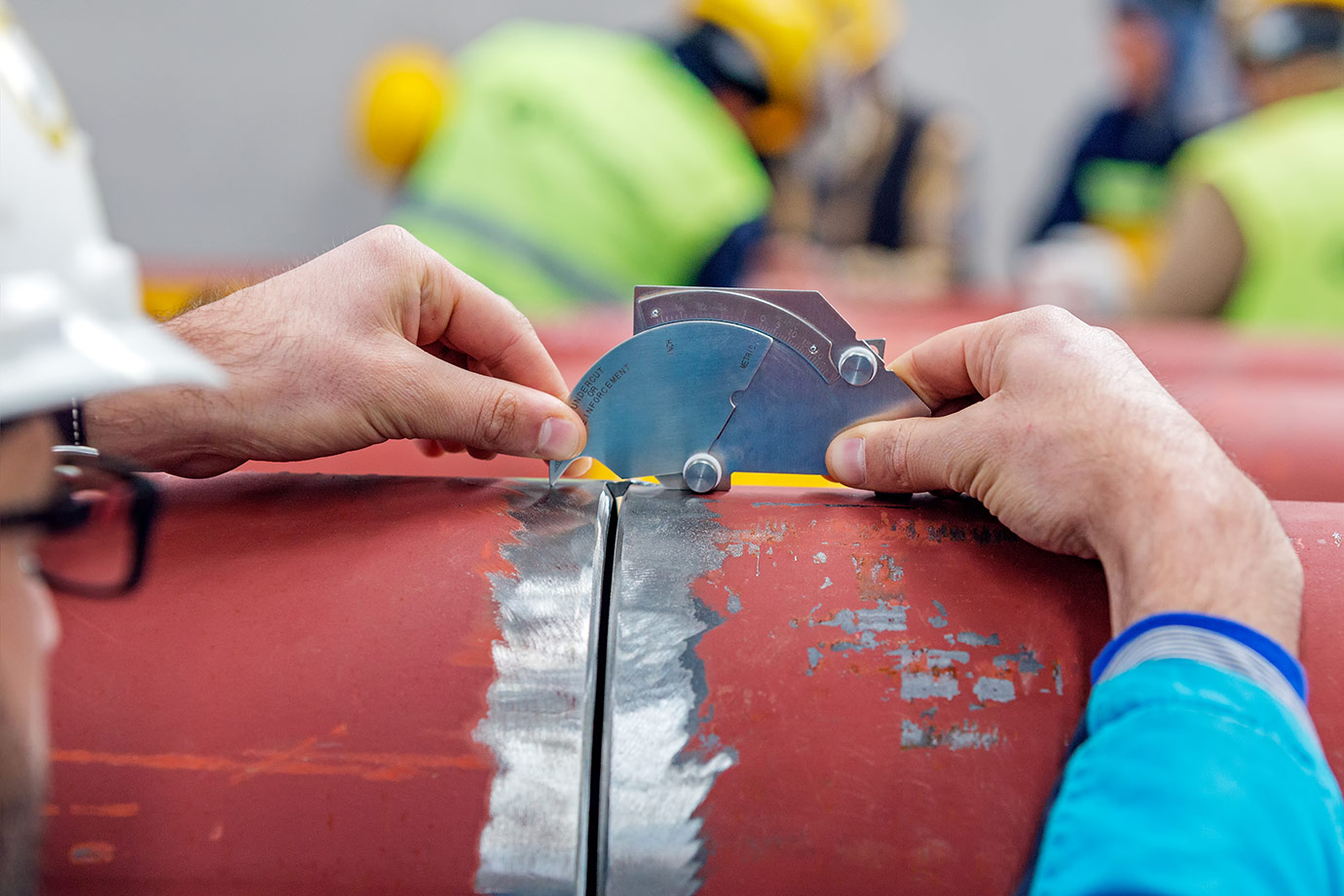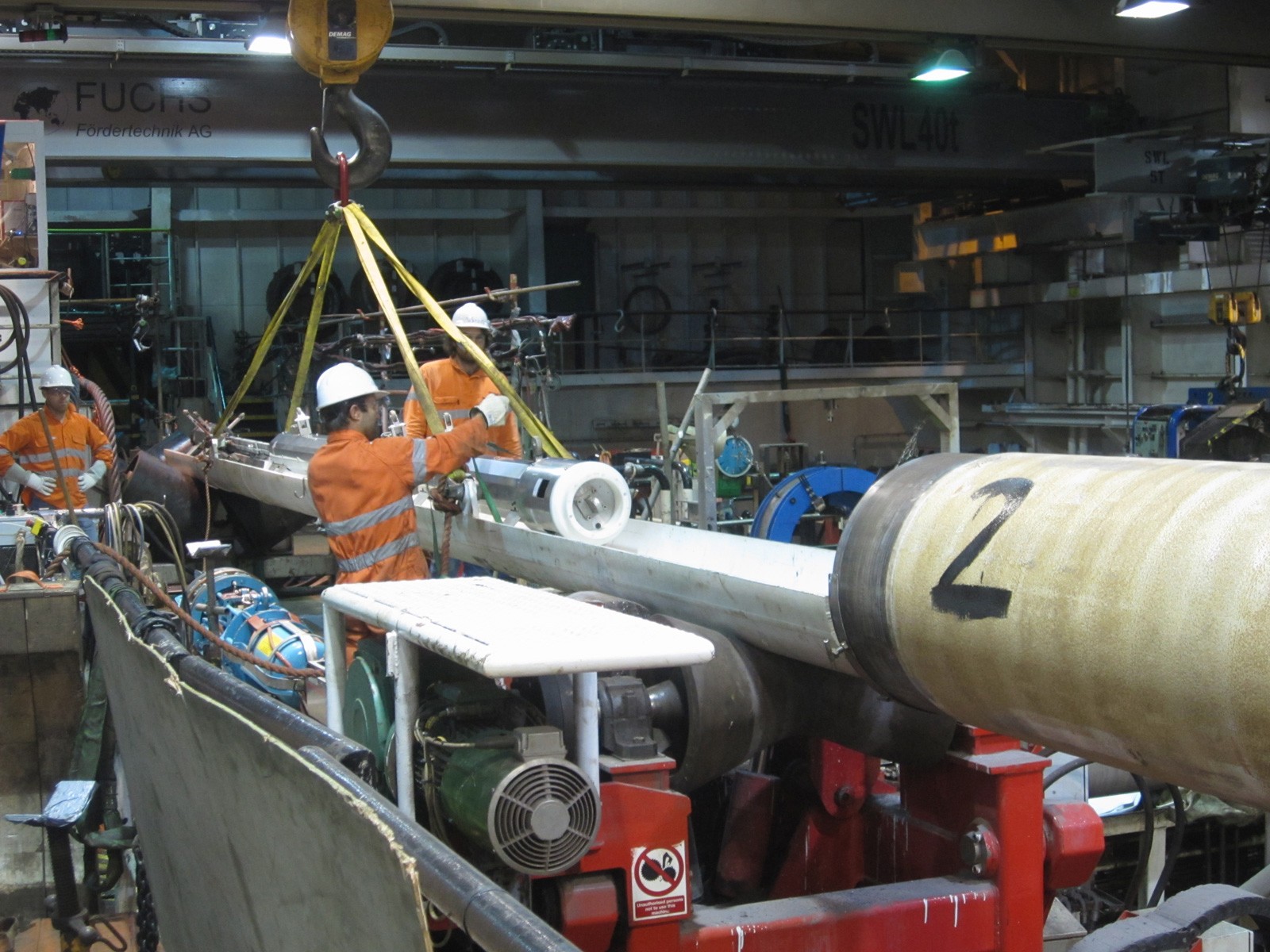Comprehensive Guide to Pipe Welding Examination: Making Sure Integrity and Safety And Security in Pipeline Building and Maintenance
The honesty and safety of pipelines are extremely important in today's facilities landscape, underscoring the important duty of welding evaluation in pipe construction and maintenance. A thorough guide on this subject not only highlights the requirement of examining weld quality but likewise attends to the different inspection techniques offered, such as radiographic and ultrasonic testing. By understanding typical problems and their effects, stakeholders can carry out finest methods that make sure compliance and long life. Nonetheless, the intricacies associated with welding evaluation raising significant inquiries concerning sector criteria and the advancing modern technologies that might redefine these practices.

Relevance of Welding Examination
Welding inspection plays a crucial duty in guaranteeing the integrity and safety of pipe systems. It works as a basic procedure that confirms the quality and reliability of welded joints, which are usually one of the most at risk factors in pipeline construction. Through organized analysis, examiners can determine prospective problems such as fractures, porosity, and insufficient fusion, which may jeopardize the architectural integrity of the pipeline.
The significance of welding assessment prolongs past mere conformity with industry requirements; it likewise safeguards public health and the atmosphere. Pipelines carrying harmful materials pose substantial dangers if failings take place. Reliable examination procedures aid avoid tears and leakages, mitigating environmental damage and protecting neighborhoods. Furthermore, complete evaluations can improve the long life of pipe systems, lowering the demand for expensive fixings and downtime.
In addition to making sure safety and compliance, welding assessment cultivates a culture of quality control within organizations. By focusing on inspection throughout the welding process, firms can build a track record for reliability and excellence, eventually leading to raised consumer self-confidence and company possibilities (Pipeline Welding Inspection). Therefore, the significance of welding assessment can not be overstated in the context of pipe construction and upkeep
Trick Welding Procedures
Various welding processes are employed in pipeline construction, each with its very own advantages and applications. Amongst one of the most widely used techniques are Shielded Metal Arc Welding (SMAW), Gas Tungsten Arc Welding (GTAW), and Gas Steel Arc Welding (GMAW) SMAW is favored for its versatility and ability to perform well in numerous environmental conditions, making it suitable for area applications.
GTAW, commonly described as Tungsten Inert Gas (TIG) welding, is recognized for its capability to generate top quality welds with exceptional control over heat input, making it ideal for thin-walled pipelines and stainless-steel materials. GMAW, or Metal Inert Gas (MIG) welding, supplies high deposition rates and is reliable for large projects, frequently utilized in the manufacture of pipelines in controlled settings.
Furthermore, Immersed Arc Welding (SAW) is made use of for its deep infiltration and high performance, specifically in the building and construction of large-diameter pipelines. Each of these procedures contributes to the general stability and safety and security of pipe constructions, allowing welders to choose the most proper technique based on material type, project requirements, and environmental conditions. Understanding these crucial welding procedures is necessary for effective pipe welding inspection.
Typical Flaws and Their Influence

Porosity, defined by tiny gas pockets entraped within the weld, damages the material and can result in leaks. Cracks, which might happen you could check here due to thermal tensions or incorrect cooling, can result and propagate in architectural failure under pressure. Damaging, where the base metal is deteriorated along the weld bead, decreases the effective cross-section of the pipe, enhancing the threat of fracture.
Insufficient combination occurs when the weld steel does not properly bond with the base steel, leading to weak areas that might fail under stress. Slag incorporation, the entrapment of non-metallic material within the weld, can additionally compromise the joint's integrity. Recognizing and dealing with these issues early in the construction process is critical to guaranteeing the long-lasting reliability and safety of pipeline systems, therefore protecting both the facilities and the setting.
Assessment Tools and techniques

Visual evaluation is the very first line of defense, allowing inspectors to recognize surface area irregularities, misalignment, or various other noticeable defects. Ultrasonic testing employs high-frequency acoustic waves to detect inner problems, supplying precise depth dimensions and identifying problems without damaging the weld. Radiographic screening makes use of X-rays or gamma rays to produce photos of the weld, making it possible for the recognition of inner gaps, fractures, or additions.
Magnetic particle screening is especially efficient for finding surface and near-surface suspensions in ferromagnetic products. This method involves applying an electromagnetic field and fine iron fragments to the weld, disclosing flaws through the buildup of particles at imperfection sites.
Along with these methods, specialized tools such as automated ultrasonic screening tools and electronic try these out radiography systems boost evaluation precision and effectiveness, ensuring a comprehensive analysis of pipeline welds during building and construction and maintenance.
Ideal Practices for Compliance
Following ideal practices for conformity in pipeline welding evaluation is critical for guaranteeing the honesty and safety and security of the framework. Organizations must develop an extensive high quality monitoring system that aligns with market criteria such as ASME, API, and AWS. This includes establishing thorough welding procedures that specify the materials, methods, and credentials needed for welders.
Regular training and certification of evaluation workers are crucial to maintain high competency degrees. Assessors need to be acquainted with numerous non-destructive screening (NDT) approaches, consisting of ultrasonic testing, radiographic testing, and visual evaluation, to effectively identify possible issues.
Paperwork plays a crucial function in compliance; maintaining exact records of assessments, weld treatments, and workers credentials helps to guarantee traceability and accountability. Set up audits and testimonials of welding methods need to be performed to determine areas for renovation and guarantee adherence to established protocols.

Conclusion
Finally, the implementation of extensive welding assessment protocols is extremely important for making sure the integrity and security of pipeline construction and upkeep. By identifying flaws and utilizing innovative evaluation strategies, organizations can dramatically enhance the top quality of welded joints. Adhering to ideal practices fosters compliance with market standards, eventually safeguarding public health and stopping ecological risks. Continual enhancement in evaluation procedures will certainly add to the longevity and dependability of pipe systems, underscoring the vital duty of welding inspection in the market.
The honesty and safety and security of pipes are extremely important in today's framework landscape, highlighting the essential role of welding examination in pipe building and maintenance. Comprehending these crucial welding procedures is vital for efficient pipeline welding examination.
Sticking to best techniques for conformity in pipe welding evaluation is essential for making sure the stability and safety of the framework.In final thought, the application of rigorous welding evaluation methods is vital for guaranteeing the honesty and security of pipeline building and upkeep. Continuous renovation in evaluation processes will certainly contribute to the durability and reliability of pipeline systems, underscoring the critical function of welding assessment in the industry.
Comments on “Pipeline Welding Inspection: Cutting-Edge Approaches for Accurate Assessments”